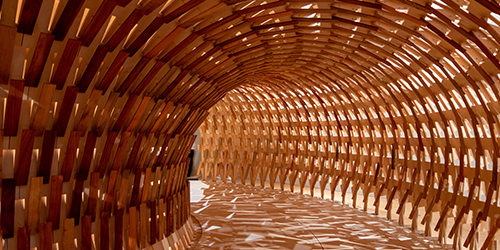
Eco-Friendly Construction: Sustainable Building Materials
Sustainable building materials play a pivotal role in promoting environmentally conscious construction practices. From reducing carbon footprints to enhancing energy efficiency, explore the various aspects of using sustainable materials in the construction industry.
Introduction to Sustainable Building Materials
The construction industry has witnessed a significant shift towards sustainable practices, and the choice of building materials plays a crucial role in this transformation. Sustainable building materials are those that have a minimal impact on the environment throughout their lifecycle, from extraction and manufacturing to use and disposal. These materials prioritize resource efficiency, energy conservation, and environmental responsibility.
Benefits of Sustainable Building Materials
Opting for sustainable building materials offers a multitude of benefits. These materials contribute to energy efficiency, reduce waste, and often come from renewable sources. Additionally, sustainable materials can enhance indoor air quality, promote water conservation, and provide long-term durability. Incorporating these materials into construction projects aligns with green building principles, fostering a healthier and more environmentally friendly built environment.
Wood as a Sustainable Building Material
Wood is a classic and sustainable building material that has been used for centuries. When sourced responsibly from well-managed forests, wood is a renewable resource that sequesters carbon dioxide. Engineered wood products, such as cross-laminated timber (CLT) and laminated veneer lumber (LVL), offer alternatives to traditional solid wood while providing strength and durability.
Recycled and Reclaimed Materials
Using recycled and reclaimed materials in construction helps divert waste from landfills and reduces the demand for virgin resources. Materials like recycled steel, glass, and reclaimed wood not only conserve natural resources but also add unique character to the built environment. These materials often require less energy to produce compared to their non-recycled counterparts.
Energy-Efficient Insulation Materials
Sustainable building practices prioritize energy efficiency, and insulation materials play a crucial role in this regard. Materials like cellulose insulation, recycled denim insulation, and rigid foam made from renewable resources provide effective insulation while minimizing environmental impact. Proper insulation contributes to reduced energy consumption for heating and cooling, resulting in lower operational costs and a smaller carbon footprint.
Solar Panels and Photovoltaic Systems
Incorporating solar panels and photovoltaic systems into building design harnesses renewable energy from the sun. These systems convert sunlight into electricity, reducing reliance on traditional power sources and lowering greenhouse gas emissions. As technology advances, solar panels become more efficient and cost-effective, making them a viable choice for sustainable construction projects.
Low-impact Concrete Alternatives
Traditional concrete production is associated with high carbon emissions due to the use of cement. Sustainable alternatives include fly ash concrete, which incorporates industrial by-products, and high-performance concrete mixes that use less cement. Additionally, researchers are exploring innovative approaches such as carbon capture and utilization to mitigate the environmental impact of concrete production.
Green Roofs and Living Walls
Green roofs and living walls introduce vegetation into building designs, providing numerous environmental benefits. These features enhance insulation, reduce stormwater runoff, and contribute to improved air quality. Green roofs, covered with vegetation, absorb heat and provide natural cooling, reducing the urban heat island effect. Living walls not only add aesthetic appeal but also support biodiversity and promote ecological balance.
Biodegradable and Non-toxic Finishes
Choosing biodegradable and non-toxic finishes for interior spaces enhances indoor air quality and reduces the environmental impact of volatile organic compounds (VOCs). Natural finishes like clay plaster, lime wash, and milk paint offer sustainable alternatives to conventional paints and synthetic coatings. These materials are free from harmful chemicals and contribute to healthier living environments.
Life Cycle Assessment in Sustainable Construction
Life Cycle Assessment (LCA) is a crucial tool in evaluating the environmental impact of building materials. It considers the entire life cycle, including raw material extraction, manufacturing, transportation, use, and disposal. LCA helps designers and builders make informed decisions, balancing environmental considerations with performance and cost.
Conclusion: A Greener Future in Construction
In conclusion, the adoption of sustainable building materials is instrumental in creating a greener and more responsible future for the construction industry. From renewable wood products to energy-efficient insulation and solar technologies, the array of sustainable materials available today allows builders and architects to make environmentally conscious choices. By prioritizing sustainability, construction practices can contribute to mitigating environmental challenges and promoting a healthier planet.
For more insights on sustainable building materials and green construction practices, visit Sustainable building materials. Explore innovative solutions and discover ways to incorporate eco-friendly materials into your construction projects for a more sustainable built environment.
